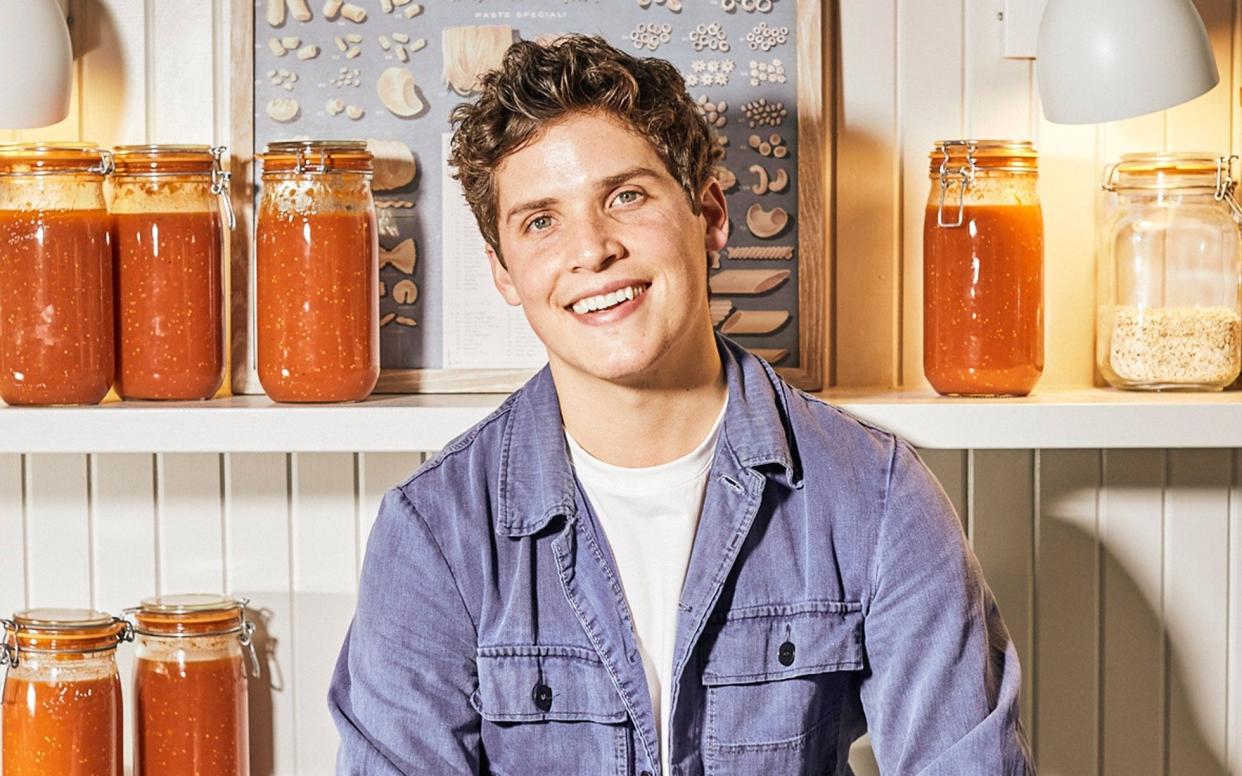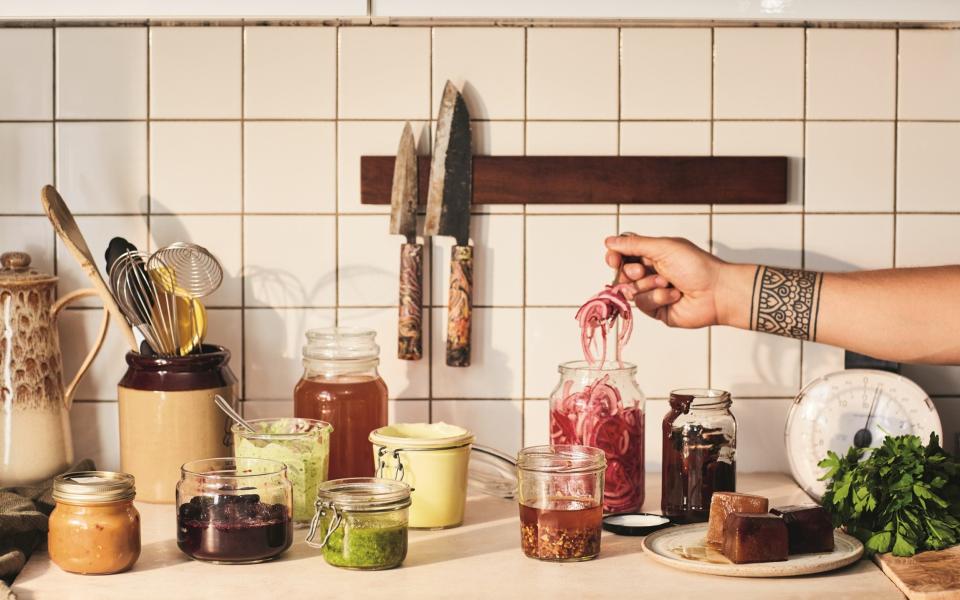The American model-turned-chef fighting food waste in Britain

If there is one industry that has famously not got along well with food, it’s modelling. A strange dichotomy, thinks chef and former model Max La Manna, given that many models also find work in food.
“Only the really successful models don’t need a secondary job, and for a lot of us that [job] was in restaurants,” La Manna explains. “In the daytime I’d go on casting calls and auditions and then in the evening I was working in restaurants. I’ve done every job from waiting tables to being the maître d’, to washing dishes, to being the chef, to managing restaurants.”
Now 33, La Manna grew up in Connecticut and moved to New York after starting modelling, post-college, when he was 21. While his face was plastered all over the billboards of New York’s Times Square in campaigns for Abercrombie & Fitch, Hollister, Jack Wills and appearing in Seventeen magazine and Vogue, La Manna was falling in love with food – and found his love of cooking put him at odds with his management agency.

“My agents were always telling me I needed to shed some weight. ‘OK,’ I’d say, ‘but what about the food?’ Food was always in the back of my mind.” Female models have it worse, he acknowledges. “There’s no denying that modelling is a toxic industry.”
La Manna soon found that cookery ignited his passions in a way that modelling didn’t. “I started hosting supper clubs out of my flat in Brooklyn,” he says, embracing social media “to build up a community.”
Four and a half years later, La Manna has amassed a following of nearly a million people on Instagram. In between his sparky vegan recipe videos, fans have followed his travels from New York to Los Angeles and now to South London, where he has made his home. And it’s here that he has discovered his latest passion: no-waste cooking.
“In the UK we throw away £800 of edible food per household every year,” he says with a groan. “That’s a nice holiday for some families. And something is wrong if we’re one of the wealthiest countries and nearly a million children go to school hungry. There’s a disconnect where we are fine with throwing away food because tomorrow we know we can just get more.”
Beneath his effervescent, ever-smiling persona, it’s obvious that food waste is an issue that troubles La Manna deeply. His brow furrows as he reels off statistics highlighting the scale of the problem. “A third of every shopping bag goes in the bin! Twenty million slices of bread per day! You should see the trucks of waste food that get collected from some Michelin-starred restaurants.”
Having worked in such establishments, La Manna fears the rise of fine dining in Britain has coincided with a fussiness that is exacerbating our food waste issue.
“Most Michelin-style dining is incompatible with reducing food waste,” he says. “There’s an idea of what perfection looks like for a lot of Michelin-starred kitchens. When I worked in those establishments, I’d get into trouble because the chefs would always be pursuing neatness and perfection while I was trying to save waste by not peeling the carrots. There are some amazing chefs who are trying to figure out how to prevent food waste and incorporate that into their meals, but a lot aren’t.”
For his part, La Manna has cut his household food waste down to “nearly zero” and has written a book to help other budding chefs do the same.
You Can Cook This! (£19.99, Ebury Press) began with a simple question La Manna put to his Instagram followers: what foods do you throw out most? “I got tens of thousands of responses, it took me hours to compile them and compare them and eventually I came down to about 20 most-wasted ingredients,” he says. These formed the chapters of his recipe book: root vegetables, grains, nightshades, gourds and legumes, leafy greens and cruciferous, fungi and alliums, non-dairy, and fruit.
“It was all about showing my followers that they can cook some of these things they’re throwing out,” says La Manna. “For example, I’ll make a vegetable stock using the peels and the skins from onions, garlic, mushroom stalks etc – you might not normally eat those, but you can use them for something. It’s important to find a way to use the entire ingredient.”
Many recipe books don’t help, argues La Manna, who suggests most encourage home cooks to buy excess ingredients. “My book has more or less the same ingredients threaded throughout so that you’re not having to go to the supermarket to buy a load of expensive ingredients, which you only use once,” he says. “You’re using the same spices and herbs throughout the entire book, which hopefully makes it easier.”
With simple yet tempting recipes including Carrot Top Pesto, Baked Sun-dried Tomato Rice, and Chocolate Orange Peanut Cheesecake, there’s plenty for cooks to dig into. However, the most valuable part for many readers will be the opening chapter, which deals with food storage, fridge management, using leftovers, and preparing food to avoid waste.
“Storage is probably the biggest mistake that I see in kitchens,” he says. “The refrigerator is still a new invention; over a hundred years ago we didn’t have a refrigerator and I don’t think we’ve fully caught up. It’s basically a cold, dry, dark environment, which will suck the life out of all the food you have in there by pulling out the water from ingredients. It’s important to plan where you’re going to store your food to help it last longer.”
La Manna recommends giving your fridge a good clear out and making sure it isn’t overfilled, which prevents air circulation and causes food to spoil more quickly. “Think about where you’re storing food; put your herbs in water, like you would with flowers, to extend their shelf life. I am also a huge fan of the freezer. Bread, potatoes, onion, ginger, garlic, lemons, avocados, even herbs – put them all in the freezer! If you have stale bread, as long as there’s no mould on it, you can run it under the tap and stick it in the oven on a low heat for 5-10 minutes and it’ll be good as new.”
While his tips have proved popular on Instagram with Gen Z and millennial followers, La Manna is under no illusions about what older generations will make of his advice. “I’m not reinventing the wheel here; this is stuff our grandparents were taught as children. It’s important to bring it back,” he says. “People are on board, they just need those lessons.”
Ultimately, La Manna hopes his book can help people save money and time, and reduce food waste, but more importantly than all of that: appreciate the food they have in front of them.
“I love food and I want people to enjoy food. [Wasting it] makes no sense to me,” La Manna says. “By giving people the option to make delicious food and see it as I do, I hope they will be happier, healthier, and wealthier chefs.”
You Can Cook This! by Max La Manna (Ebury Press, £19.99) is out on March 30

